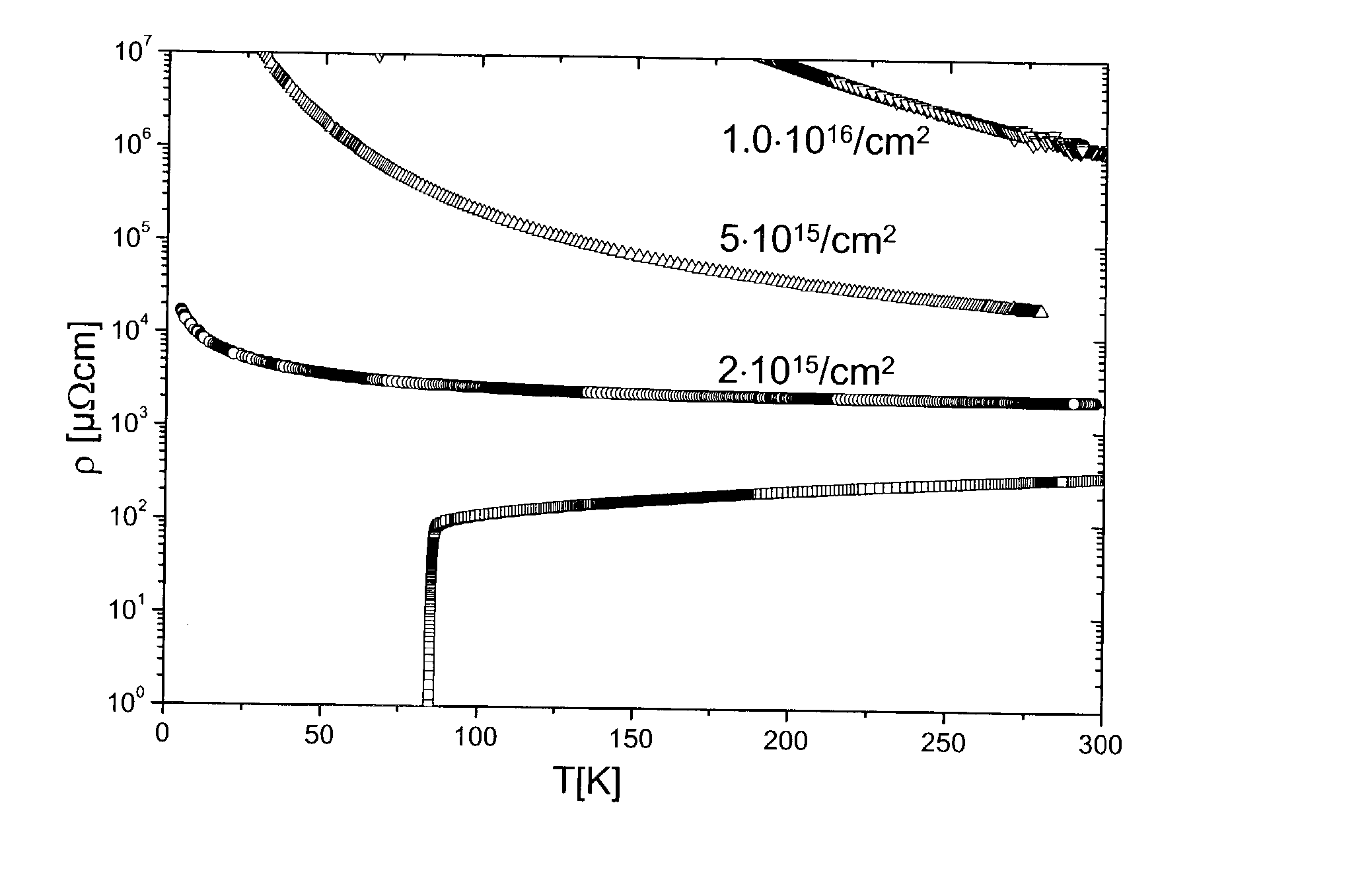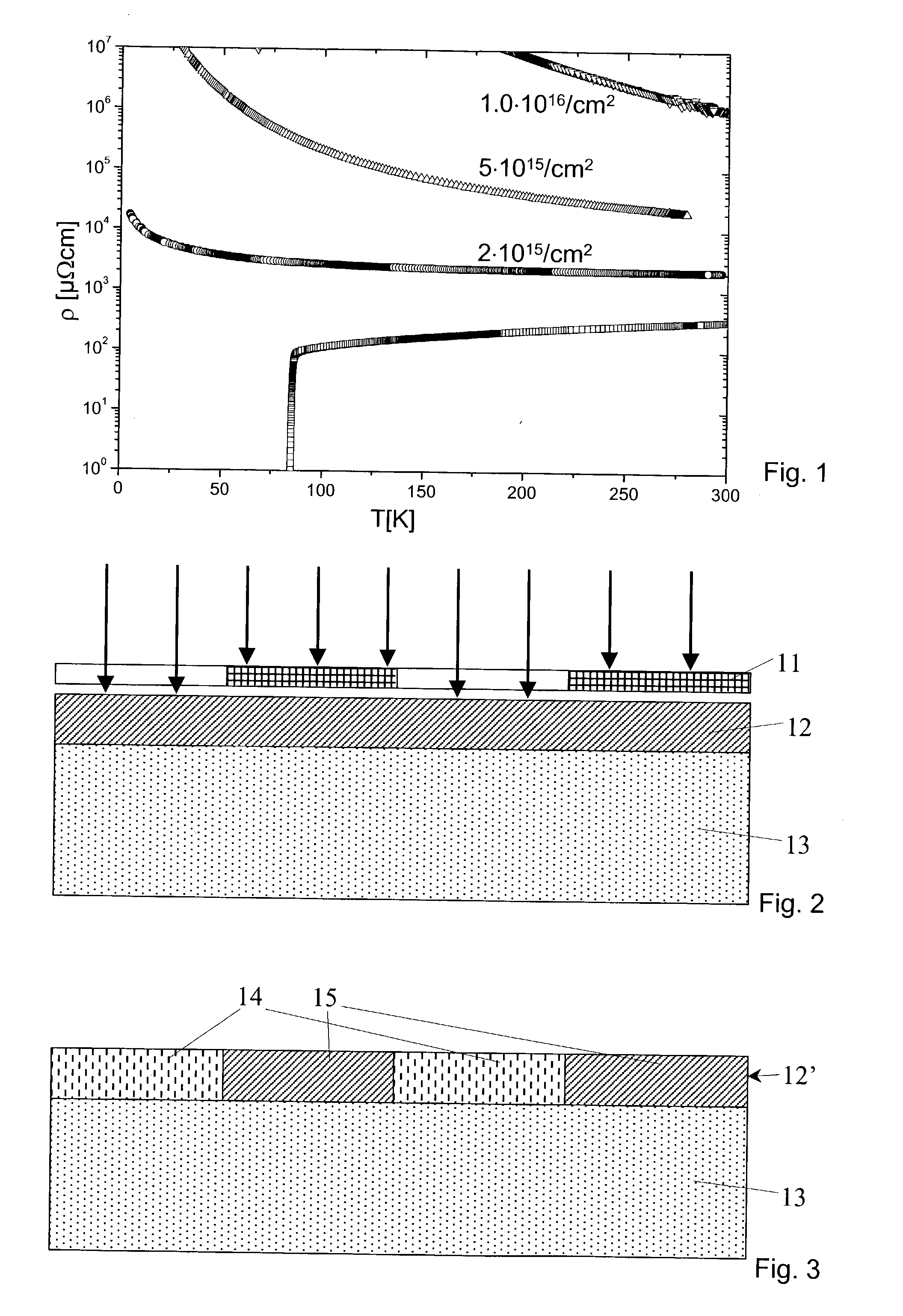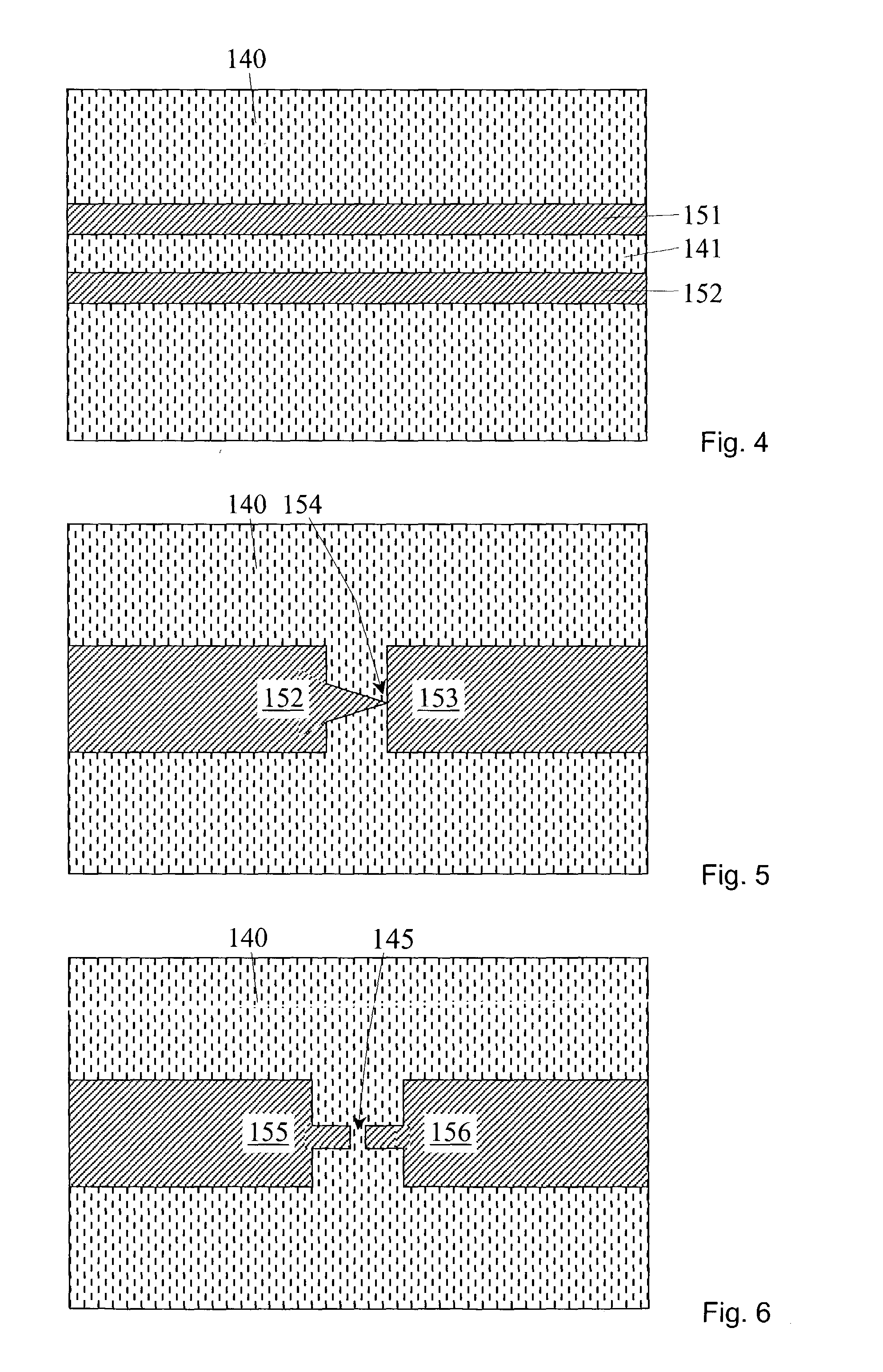Method for producing a superconducting circuit
a superconducting circuit and superconducting technology, applied in the direction of conductive materials, conductors, electrical equipment, etc., can solve the problems of large cooling apparatus, unfavorable chemical reactions, and the need to cool the device to very low temperatures during operation, so as to reduce the electrical conductivity, reduce the spatial and crystallographic structure of the film, and reduce the effect of heat dissipation
- Summary
- Abstract
- Description
- Claims
- Application Information
AI Technical Summary
Benefits of technology
Problems solved by technology
Method used
Image
Examples
Embodiment Construction
[0034] FIG. 1 shows the change of the resistivity, in .mu..OMEGA.cm, of a representative HTS, namely YBCO, as a function of the temperature at different irradiation doses, namely the initial resistivity function after preparation (square symbols) and after subsequent, cumulative irradiation with 75 keV He.sup.+ ions with total dose 2.multidot.10.sup.15, 5.multidot.10.sup.15, and 1.0.multidot.10.sup.16 ions / cm.sup.2, respectively. The YBCO film was generated on a MgO substrate by pulsed laser deposition and had a thickness of 100 nm; after deposition, the film was covered with a silicon oxide protective layer of a thickness of about 175 nm by means of electron-beam evaporation of SiO.sub.2 granulate. The graph demonstrates the inhibition of superconductivity and the increase of the resistivity after ion irradiation, and that already with a low ion dose--in this example with about 2.multidot.10.sup.15 ions / cm.sup.2 (circle symbols)--it is possible to suppress superconducting behavior ...
PUM
 Login to View More
Login to View More Abstract
Description
Claims
Application Information
 Login to View More
Login to View More - R&D
- Intellectual Property
- Life Sciences
- Materials
- Tech Scout
- Unparalleled Data Quality
- Higher Quality Content
- 60% Fewer Hallucinations
Browse by: Latest US Patents, China's latest patents, Technical Efficacy Thesaurus, Application Domain, Technology Topic, Popular Technical Reports.
© 2025 PatSnap. All rights reserved.Legal|Privacy policy|Modern Slavery Act Transparency Statement|Sitemap|About US| Contact US: help@patsnap.com



